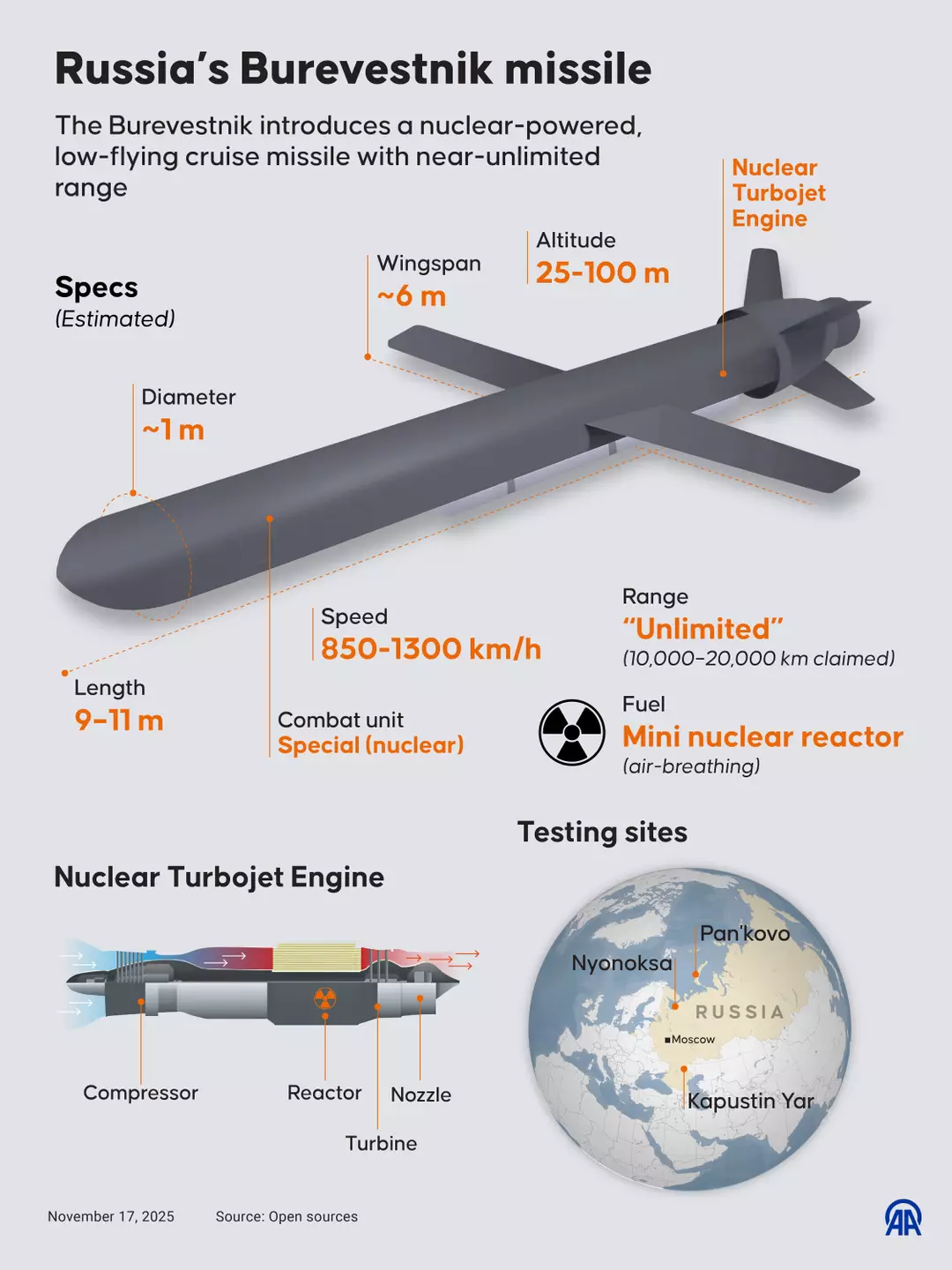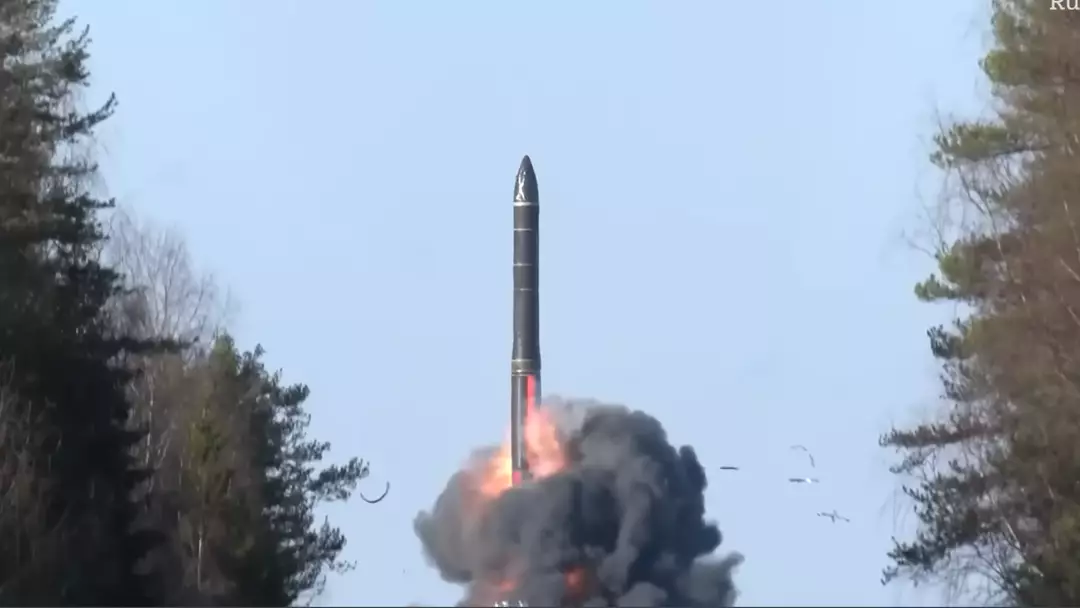Russian President Vladimir Putin is reportedly accumulating a significant arsenal of nuclear and conventional weapons, which may present a formidable challenge for Western nations in defending themselves, according to a leaked NATO report.
The report, described as a ‘confidential NATO document’ by German publication Die Welt, allegedly indicates growing concerns among allied nations about Russia’s continued production of new weaponry intended for the conflict with Ukraine.
This follows claims that Putin’s experimental Burevestnik missile, referred to as ‘flying Chernobyl’ due to its nuclear power, experienced a partial success during testing last month.
Russia asserts that this hypersonic ballistic missile covered a distance of over 8000 miles with a flight duration of 15 hours, thanks to its onboard nuclear-powered reactor.
However, NATO analysis purportedly suggests that this nuclear-powered missile could present a threat to Europe’s defenses.

The confidential report suggests that NATO allies are facing challenges in enhancing their defensive capabilities, which ‘will be exacerbated by the cruise missile’s extreme range and maneuverability.’ The Burevestnik’s nuclear reactor is said to provide it with a longer flight duration than conventional weapons.
It is believed that Russian scientists have been working on this weapon for about ten years before testing began in 2018 and 2019, with many tests failing, including an accident that resulted in the deaths of workers during an experiment involving an ‘isotope power source for a liquid-fuelled rocket engine.’
However, in October, President Putin announced that work on the missile had been completed and a final test was conducted to demonstrate the rocket’s capabilities.
The NATO document claims the Burevestnik achieved a speed of 560mph during this test.
“The ability to attack targets anywhere in Europe, combined with the high mobility of the launcher, ensures a high survivability rate. The lack of clarity about the deployed warheads poses defence challenges for NATO,” the document states (via Euronews).
The ‘flying Chernobyl’ missile is one component of Putin’s expanding collection of new nuclear-capable weapons, as reportedly identified in the NATO document.

Another point of concern for the military alliance is the hypersonic ballistic Oreshnik missile, which has already been used with devastating effect against the Ukrainian city of Dnipro this year.
Similar to the ‘flying Chernobyl,’ this missile can be equipped with either conventional or nuclear warheads and has a range of 3100 miles, potentially reaching the West Coast or US airbases in the UK and Europe.
The uncertainty of whether potential launches of these missiles could lead to nuclear catastrophe is highlighted as a strategic issue for NATO in the documents, which note that ‘the ambiguity of the warheads poses challenges.’
Furthermore, Russia’s powerful Poseidon class of nuclear-powered submarines and underwater drones present another significant challenge for allied nations, according to the Die Welt report.
These long-range underwater weapons and submarines are reported to have the capability to ‘destroy naval bases, ports, and coastal cities in the Pacific, along the US East Coast, and in the UK and France,’ as stated in the leaked report.
Efforts have been made to contact NATO for a comment on these developments.

